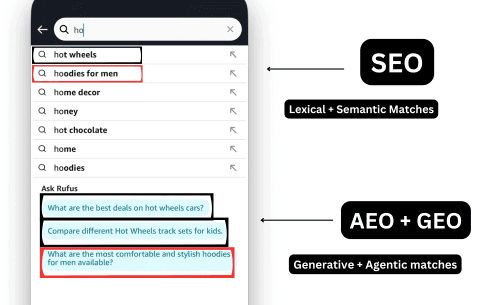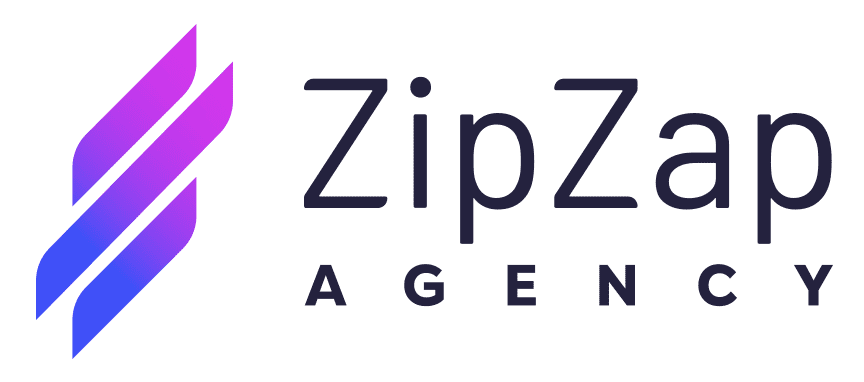
Big changes: star-only seller reviews, no more FBA prep, Amazon AI tools for product listings, and stricter shipping rules
This week’s Amazon news brings big changes for sellers: AI is taking over listings with Project Starfish, FBA prep services are shutting down in 2026, and seller feedback is moving to a star-only system. Helium 10 warns that AI-powered sellers will dominate by 2026, while Amazon also rolls out new video metrics, updates global selling tools, and tightens Premium Shipping rules. Here’s everything you need to know to stay ahead
News #1. Amazon Simplifies Seller Feedback: Star Ratings Only
Amazon has replaced detailed seller reviews with a quick star-only system. Easier for customers, more reviews for sellers — but lower ratings now require a reason and can be auto-removed if not seller-related.
Starting August 4, Amazon is rolling out a streamlined seller feedback system: shoppers will now be able to leave only a star rating without writing a comment. According to Amazon, this change makes the process quicker and easier — which should lead to more buyers leaving reviews.
Previously, many customers didn’t bother leaving any feedback at all, even if everything went smoothly, simply because they didn’t want to type out a response. As a result, sellers often ended up with no rating despite having satisfied buyers.
To protect sellers, Amazon is also adding safeguards:
Customers must provide a reason when giving less than 4 stars.
If the reason isn’t related to the seller’s performance (for example, a complaint about the product itself), the rating will be automatically excluded.
Inappropriate or rule-breaking feedback will be removed automatically.
Sellers can still report unfair ratings via Report a Violation.
With this update, a happy customer can now drop a quick 5-star rating in seconds. This means:
Amazon highlighted that during testing, a significant portion of new 5-star ratings came from satisfied customers who previously never left written reviews.
The overall volume of feedback will grow, especially positive ratings.
Many sellers may see their average feedback score increase.
Stronger seller metrics improve chances of winning the Buy Box, build customer trust, and help keep accounts in good standing.
News #2. Amazon to End All FBA Prep Services by January 1, 2026
Starting January 2026, Amazon will no longer provide prep services (labeling, bubble wrap, bagging) for FBA shipments. Sellers must handle all prep themselves or use 3PLs, or risk inventory being rejected.
Last week, Amazon officially announced that starting January 1, 2026, it will discontinue all prep services for FBA shipments in the U.S. marketplace. This change applies to every inbound shipment into FBA — whether sent directly by sellers or routed through AWD, AGL, SEND, or other Amazon logistics programs.
What’s changing?
Until now, Amazon offered paid prep services such as FNSKU labeling, polybagging, bubble wrapping, and other packaging tasks. Beginning in 2026, sellers will be fully responsible for all product prep before items reach an Amazon warehouse.If an unprepared shipment arrives after January 1, it won’t be accepted — and sellers will not be reimbursed for lost or damaged goods.
Who will be most affected?
Online arbitrage and wholesale sellers who ship products directly from distributors will have to overhaul their logistics and find partners for prep and labeling.
Small businesses with limited resources may face higher costs and added complexity in handling prep work.
AWD users will now need to ensure that products are fully prepped before being sent into Amazon’s fulfillment network.
For most Private Label sellers, however, the impact will be minimal since prep and labeling are already handled at the factory level.Why is Amazon making this change?
Amazon states the goal is to improve logistics efficiency and speed up fulfillment times. Still, many industry experts believe the move is also meant to reduce Amazon’s own costs and shift liability for prep errors back onto sellers.What should sellers do now?
Assess your reliance on Amazon’s FBA Prep Service.
Line up a reliable 3PL partner or build an in-house prep workflow.
Review Amazon’s Ships in Product Packaging (SIPP) program, which reduces prep requirements.
Double-check that all SKUs meet labeling and prep standards.
Strengthen internal quality control to avoid delays in receiving or inventory write-offs.
News #3. Amazon Launches Project Starfish: AI-Powered Product Listings
Amazon’s Project Starfish scans brand websites to auto-generate product titles, descriptions, and even enable “Buy for Me.” Faster launches and better SEO visibility — but less control and higher risks for sellers.
Amazon has unveiled Project Starfish, a large-scale initiative aimed at transforming how product listings are created. The project uses artificial intelligence to pull structured data directly from third-party websites and automatically build richer product detail pages.
The goal is clear: Amazon wants to position itself as the primary source of product information online — and a stronger rival to Google Shopping.
How it works (so far):
Starfish is already scanning over 200,000 branded websites.
It auto-fills titles, descriptions, and attributes for Amazon listings.
It even powers a “Buy for Me” function, allowing Amazon to facilitate purchases outside its existing catalog.
For sellers, this could mean less manual work on listing creation, faster product launches, and higher-quality catalog content. But it’s still unclear exactly how this automation will be rolled out in Seller Central, or what level of control sellers will retain.
What sellers should watch out for:
In short, Project Starfish may streamline listing creation and boost discoverability, but sellers should treat it as a tool, not a replacement for oversight. Human review will still be essential.
Upside: Time savings, improved visibility, and easier onboarding of new products.
Downside: Less control over content accuracy. AI-driven automation could introduce errors, inconsistencies, or outdated information.
Action point: Review your brand sites and product data outside of Amazon — because that’s where the AI will be pulling information from.
News #4. AI-Powered Sellers Will Dominate Amazon by 2026 — Helium 10 Report
Helium 10 research shows that AI is transforming Amazon: search is intent-based, ads use semantic targeting, and content must be optimized for Rufus and Alexa+. Sellers who adapt will lead by 2026.
Last week, Andrew Bell, Amazon Lead & AI Expert at Helium 10, published an in-depth analysis of how artificial intelligence is transforming the buying journey on Amazon — and why sellers who embrace AI today will be leading the marketplace as early as 2026.
Key takeaway: Amazon is no longer just a marketplace — it’s becoming an AI-first platform.
Here’s what’s changing:
Search is intent-driven, not keyword-driven.
Shoppers are engaging more with Rufus and Alexa+, asking natural-language questions like “What’s a good gift for a 10-year-old who loves art?” instead of typing “drawing kit.” Products now surface if their listings are written in a human, benefit-driven way, not just stuffed with keywords.Advertising is moving to semantic targeting.
Amazon Ads are increasingly served based on context and meaning rather than keyword matching. If your ad isn’t relevant to the customer’s actual intent, it simply won’t appear.Content must be AI-optimized.
Amazon is pushing its own AI tools for generating titles, bullets, product descriptions, and even A+ content. Early tests by Helium 10 show that these AI-assisted listings achieve higher CTRs and conversions. The winning formula is a mix of SEO structure and natural storytelling that resonates with both customers and Amazon’s AI.What sellers should do now:
The bottom line: In the new Amazon reality, success won’t belong to those who chase keywords — it will belong to those who can tell their product’s story in a way that both humans and AI algorithms understand.
Rebuild listings with AI visibility in mind.
Leverage Amazon’s native AI tools (or external solutions) for content creation.
Test creatives across mobile search, voice assistants, and AI-driven recommendation feeds.

Other Amazon Updates
New Metric: Potential Sales Lift for shopping videos shows estimated sales growth from adding recommended product videos.
Amazon introduced a new metric called Potential Sales Lift, designed to help sellers understand how much their sales could grow by adding recommended shopping videos. These videos make it easier for customers to visualize how a product works, which often drives higher conversions. You can find this metric in the Upload and Manage Videos dashboard.
Global Expansion: Redesigned “Sell Globally” hub offers cost projections, SEND/AGL logistics, and new EU entry guides.
Amazon rolled out an updated Sell Globally interface to make international expansion more seamless for sellers. The new experience allows you to:
The platform now places extra focus on tax compliance, shipping, and local registrations, helping sellers avoid common pitfalls when going cross-border.
Evaluate potential demand and costs in new regions,
Access Amazon SEND and Amazon Global Logistics services,
Explore updated step-by-step guides for launching in Europe (available starting August 2025).
Premium Shipping: Regional 1–2 day delivery now requires stricter metrics (on-time 93.5%, tracking 99%, cancellations <0.5%).
Sellers can now activate Premium Shipping on a regional level, offering 1–2 day delivery in selected areas. Along with regional targeting, Amazon added a stricter three-tier performance system:
On-time delivery rate: must stay above 93.5%
Valid tracking rate: at least 99%
Seller-canceled orders: no higher than 0.5%
Performance is tracked weekly. Three consecutive violations will remove a seller from the program, though automatic reinstatement is possible after four weeks of stable metrics or via an appeal with a corrective action plan.
A key rule: 1–2 day orders must ship the same day (before 2 p.m.). Sellers also need to manually configure delivery regions and ensure templates reflect accurate shipping rates.
Book a call now…
Book a call now…
Up to 45-min duration video-call
Topics we'll discuss:
| The next steps — there are two options
|
